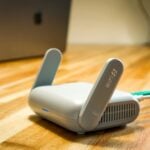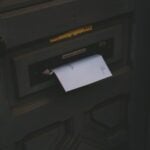No! It’s not safe. Some Tesla owners have tried using wet towels on Supercharger handles to speed up charging. This trick aims to cool down the cable and boost power delivery. But Tesla warns against this practice due to safety risks and potential damage to the charging equipment.
Besides the obvious (always avoid liquids around electric ports) there’s another major reason why you don’t want to do this. The supercharger handle is designed to control the flow of electricity based on sensors inside it. By wrapping a wet towel around the handle you’re essentially “disabling” the safety functions built into it. Yes, you might notice a boost in charging speed that would otherwise have been regulated down; but there’s a reason for that. The risk of fire or damage to your vehicle goes way up.
Tesla Supercharging Tricks: To Wrap or Not to Wrap?
The “Wet Towel” Trick
The “wet towel” trick involves wrapping a damp cloth around a Tesla Supercharger handle, supposedly to cool it down and improve charging speeds. Some Tesla owners claim to have seen faster charging rates using this method, especially in hot weather.
The wet towel method gained attention online as a way to bypass thermal limits on Superchargers. Drivers claimed it could increase charging rates, especially in hot weather. However, Tesla does not approve of this tactic.
Wrapping damp cloths around Supercharger cables can be unsafe. It may cause electrical problems or harm the charger. Tesla designed its charging system with built-in safeguards. Trying to override these protections is risky and unwise.
Tesla’s Stance
Tesla, however, officially advises against the wet towel trick. They state that it interferes with temperature monitors and could lead to overheating or damage to the charging equipment. While some owners haven’t experienced issues, Tesla’s warning suggests a potential risk.
Safety Concerns
The primary concern with the wet towel trick is the potential for electrical hazards. Water and electricity don’t mix, and even a damp cloth could create a risk of shock or short circuit. Moreover, if the towel is too wet, it could seep into the charging port and cause damage to the car’s electronics.
Alternatives to Boosting Charging Speed
| Method | Description | Effectiveness | Safety |
|---|---|---|---|
| Preconditioning Battery | Warming or cooling the battery before charging to its optimal temperature. | High | Very Safe |
| Charging at Lower State of Charge (SoC) | Charging when the battery is less full, as charging speeds tend to slow down as the battery nears capacity. | Moderate to High | Very Safe |
| Using a Supercharger V3 | These chargers are generally faster than older V2 models. | High | Very Safe |
| Avoiding Peak Hours | Superchargers can be slower during peak usage times. | Moderate | Very Safe |
Weighing the Risks and Benefits
The wet towel trick might offer a slight charging speed boost in certain conditions, but it’s essential to weigh the potential risks. If you’re considering trying it, proceed with caution and be aware of the potential hazards.
Key Takeaways
- Tesla warns against using wet towels on Supercharger handles
- The wet towel method can damage equipment and pose safety risks
- Drivers should follow Tesla’s official charging guidelines for best results
Evaluating the Safety and Efficacy of the Wet Towel Method
The wet towel trick for Tesla Superchargers aims to speed up charging. But it’s vital to look at how safe and effective this method really is.
Understanding the Supercharger Technology
Tesla Superchargers use high-powered direct current to charge cars fast. They have built-in safety features to protect against overheating. The charger and car talk to each other to control the power flow. This helps keep things safe.
When it’s hot outside, charging can slow down. The system does this on purpose to avoid damage from heat. Wrapping a wet towel around the charger handle tries to cool it down. The idea is to trick the system into charging faster.
Assessing the Risks Associated with Wet Towels on Charging Handles
Putting wet towels on Supercharger handles can be risky. Water and electricity don’t mix well. There’s a chance of short circuits or shocks. The charger wasn’t made to get wet on purpose.
The hack might work sometimes, but it’s not safe. It could hurt the charger or your car. Tesla doesn’t approve this trick. If something goes wrong, you might lose your warranty. It’s best to follow the rules and be patient while charging.
Instead of using wet towels, try to charge when it’s cooler out. Early morning or late evening are good times. This can help you charge faster without any risks.
Thermal Management and Charging Performance
Proper temperature control is key for fast and safe Tesla Supercharging. Heat affects charging speed and safety.
Importance of Temperature Regulation During Supercharging
Tesla Superchargers work best when temperatures stay in check. Too much heat can slow down charging or even damage the car’s battery. The charging cable and handle have built-in sensors to monitor heat. These sensors help control the charging rate.
When it’s hot outside, charging may take longer. The system slows down to protect the battery and equipment. In colder weather, the battery might need to warm up first. This ensures it can accept the fast charge safely.
Tesla’s cooling systems work hard during Supercharging. They keep the battery at the right temperature. This lets the car charge as fast as possible without overheating.
Factors Influencing Supercharger Handle Temperatures
Many things can make the Supercharger handle heat up:
- Fast charging speeds
- Hot weather
- How full the battery is
- How long the car has been charging
The handle gets warm because of the high power going through it. On very hot days, the heat can build up faster. This might slow down charging to prevent damage.
Using a wet towel on the handle is risky. It could:
- Cause electric shocks
- Damage the charger
- Void the car’s warranty
Tesla has not approved this method. It’s best to let the car’s systems manage the temperature on their own.
Frequently Asked Questions
Tesla owners have questions about charging safety and efficiency. Here are some common concerns and best practices for using Superchargers.
What are the safety implications of charging a Tesla during wet conditions?
Charging a Tesla in wet weather is generally safe. The charging ports are built to handle rain and moisture. Still, it’s smart to keep the port as dry as possible. Wipe off excess water before plugging in.
Are there official Tesla guidelines for handling superchargers when it’s raining?
Tesla doesn’t have specific rules for rainy charging. The company designs Superchargers to work in different weather conditions. Users should follow basic safety steps like avoiding standing water and drying off equipment if very wet.
Can cooling a Tesla Supercharger handle improve charging efficiency safely?
Cooling the charger handle might speed up charging a bit. But Tesla warns against the “wet towel trick.” This could damage the charger or car. It’s best to let the system work as designed.
What precautions should be taken to charge a Tesla in the rain?
When charging in rain, shake off water from the cable. Make sure your hands are dry. Avoid puddles around the charging area. If there’s heavy rain, wait for it to slow down before charging.
Does moisture impact the performance or safety of Tesla Supercharging?
A little moisture won’t hurt charging performance or safety. The system has built-in protections. But lots of water could slow things down. In extreme cases, the charger might shut off for safety.
How can I ensure my Tesla charger remains protected from elements like rain during use?
To protect your charger, park close to the Supercharger. This keeps the cable off the ground. Use any covers provided at the charging station. At home, install your charger in a covered area if possible.







